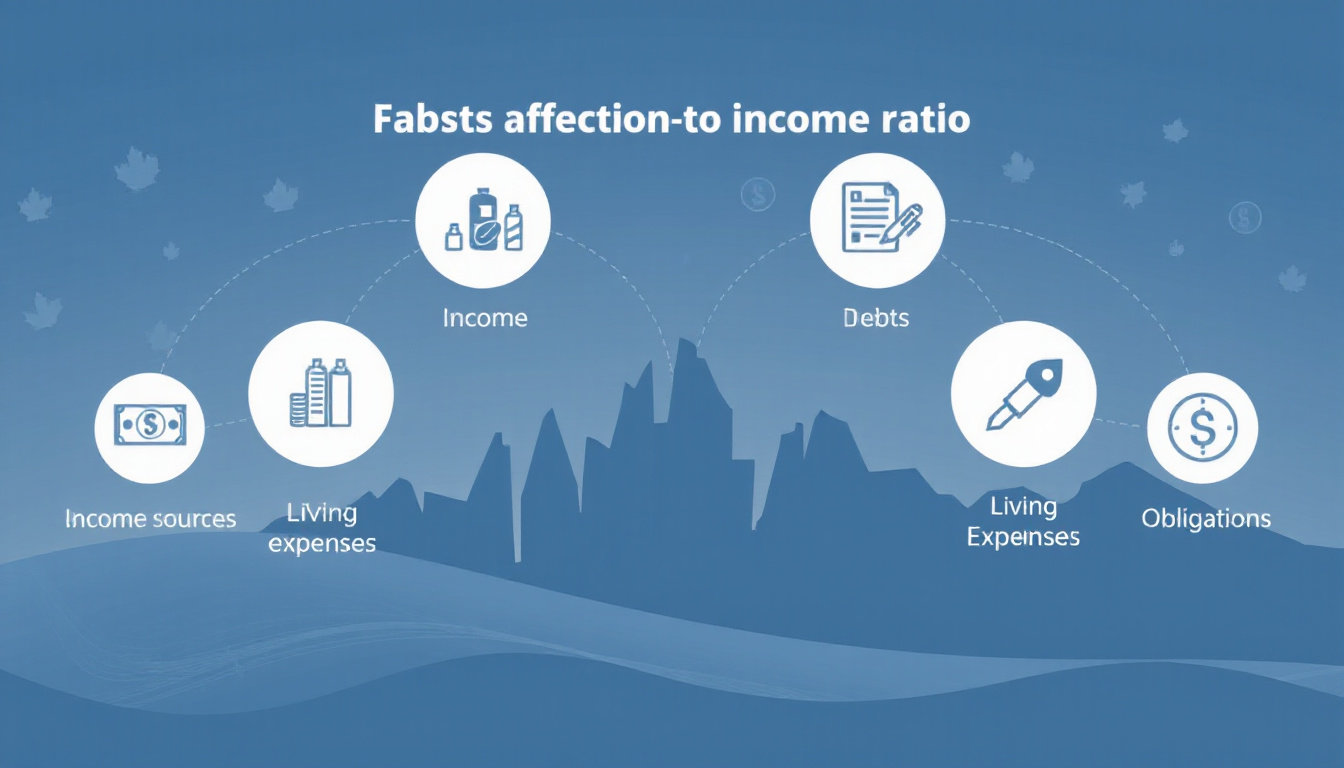The average debt-to-income ratio in Canada stands at approximately 173% as of 2023, highlighting the precarious financial situation faced by many Canadian households. This figure demonstrates the total amount of debt relative to income, indicating that Canadians owe over $
1.73 for every dollar earned. This ratio is a crucial measurement for assessing personal financial health and is closely monitored by lenders when considering credit applications.
What is the Debt-to-Income Ratio?
The debt-to-income (DTI) ratio is calculated by dividing total monthly debt payments by gross monthly income. A higher DTI ratio suggests that a greater portion of income goes towards servicing debt, which can make it challenging to obtain loans or credit.
Current Average Debt-to-Income Ratio in Canada
As reported by Statistics Canada, the average debt-to-income ratio in Canada has increased significantly from previous years, prompting concerns about the financial stability of Canadian households. This trend raises questions about sustainable borrowing practices.
Factors Influencing the Debt-to-Income Ratio
Several factors contribute to the current DTI ratio, including rising housing costs, increased consumer spending, and changes in interest rates. Understanding these elements can shed light on personal finance management and the economic climate.
Tips for Managing Your Debt-to-Income Ratio
To improve your DTI ratio, consider strategies such as budgeting effectively, targeting high-interest debt, and exploring options for credit counseling services. Managing your debt effectively can lead to improved financial stability and open doors to better lending opportunities.

Key Takeaways
- The debt-to-income ratio measures the percentage of income that goes towards debt repayment.
- As of recent data, the average debt-to-income ratio in Canada is a crucial indicator of financial health.
- Factors such as housing costs, income levels, and consumer spending habits can impact the debt-to-income ratio.
- To maintain a healthy debt-to-income ratio, it’s essential to monitor your debt levels and income regularly.
- Implementing budgeting and financial planning can help manage and improve your debt-to-income ratio effectively.
What is the Debt-to-Income Ratio?
In 2023, the average debt-to-income (DTI) ratio in Canada stands at approximately 184%, according to Statistics Canada. This figure indicates that for every dollar of income, the average Canadian owes $1.84 in debt, which paints a concerning picture of household financial health. A rising DTI ratio often signals increased financial strain on consumers, as a higher percentage of income goes toward servicing debt. Furthermore, the DTI has steadily increased over the past decade, reflecting changes in mortgage costs, credit card usage, and overall economic factors affecting Canadians. This statistic emphasizes the importance of financial literacy and responsible borrowing, as households grapple with the consequences of high debt levels. For those interested in managing their financial futures, understanding and monitoring one’s DTI ratio could be integral to achieving financial stability.
Current Average Debt-to-Income Ratio in Canada
As of 2023, the average debt-to-income ratio in Canada stands at approximately 175%. This troubling statistic indicates that, on average, Canadians owe $1.75 for every dollar they earn, reflecting the increasing financial burden many households face. According to a report from the Bank of Canada, high levels of household debt pose considerable risks to the economy, with rising interest rates further straining budgets. An increasing debt-to-income ratio is not only an indicator of individual financial health but also of broader economic trends, highlighting the importance for Canadians to understand and manage their debt levels effectively. This ratio has been trending upward in recent years, raising alarms among financial experts about the implications for consumer spending and economic growth. Official statistics from the Canadian Financial Consumer Agency reveal that over 50% of Canadians are concerned about their ability to meet debt repayments, underscoring the urgency of addressing this pressing issue.
‘Debt is like any other trap; easy enough to get into, but hard enough to get out of.’ – Henry Wheeler Shaw

Factors Influencing the Debt-to-Income Ratio
As of 2023, the average debt-to-income ratio in Canada stands at approximately 173%, a figure that has raised concerns among economists and financial experts. This alarming statistic indicates that, on average, Canadians owe $1.73 for every dollar earned, highlighting the increasing burden of debt relative to income. According to Statistics Canada, various factors influence this rising ratio, including high housing costs, increased consumer borrowing, and rising interest rates. The growing trend of post-secondary education debt among young adults also contributes significantly to the national average. This data emphasizes the need for Canadians to adopt better financial management practices to maintain sustainable debt levels.
Tips for Managing Your Debt-to-Income Ratio
As of 2023, the average debt-to-income (DTI) ratio in Canada stands at approximately 174%, according to Statistics Canada. This means that for every dollar of disposable income, Canadians are carrying $1.74 in debt. This high ratio has crucial implications for financial health and borrowing capabilities. Managing your DTI ratio is essential for maintaining financial stability, especially in an economic environment where interest rates are rising. Strategies for effectively managing your DTI include reassessing your budget, prioritizing debt repayments, and potentially consolidating high-interest debts into lower-interest loans. By being proactive, individuals can improve their financial standing and reduce stress associated with high debt levels.
